Detroit Free Press
As climate change alters Michigan forests, some work to see if and how the woods can adapt
Keith Matheny, Detroit Free Press – February 27, 2023
It’s as integral a part of Michigan’s fabric as its lakes and rivers: more than 20 million acres of forest land − the hickory and oak trees of southern Michigan giving way to forests of sugar maple, birch and evergreens that surround northbound travelers.
But a warming climate is harming and transforming the woods, with further, even more dramatic impacts projected by near the end of the century.
Michigan has perhaps the most exceptional forest makeup in North America, as boundaries of multiple forest types converge here: The vast boreal forest, its cold-hardy conifer trees stretching far into Canada, dips into the Upper Peninsula and northern Michigan. A diverse mixed zone then gives way to the great Eastern Broadleaf Forest across the central and southern Lower Peninsula, dominated by beech, maple, oak and hickory trees. Even the grassland prairies of the Plains states extend into far southwest Michigan.
It’s the changes happening first at these border zones that give Michigan a front-row seat to climate change impacts on the forest the rest of the 21st century.
Climate change invites invasive weeds, bugs
Evidence of the warming climate has already been observed. Michigan’s average annual temperature is about 2 to 3 degrees Fahrenheit warmer now than it was in 1950; and the Great Lakes region is warming faster than the rest of the United States, temperature data shows. Scientists point to greenhouse gas emissions from human fossil fuel-burning as the leading driver of the warming.
Climate change carries a host of stresses for the woods. Milder winters are leading to earlier, longer growing seasons, often better news for invasive, undesirable shrubs and weeds than for desired tree species. Less-frigid winters also improve invasive insects’ survival, fueling a northward migration of problems such as emerald ash borer, hemlock wooly adelgid and beech bark disease, which is caused by an interaction between an insect and fungus. And the hotter, drier conditions many scientists predict in coming decades will leave the tree species dominating the far north struggling to adapt.
“We expect to see species range shifts − species at the southern edge of their ranges, those boreal-associated species like black spruce, quaking aspen and white birch, may lose suitable habitat in the state,” said Ryan Toot, a watershed forestry specialist with the U.S. Forest Service based in St. Paul, Minnesota.
That’s messing with one of Michigan’s most golden of gooses. The forest products industry provides 96,000 jobs and contributes $20 billion annually to Michigan’s economy, according to the Michigan Department of Natural Resources. The north woods are a vital part of hunting, fishing and other tourism that brings in more than $20 billion more.
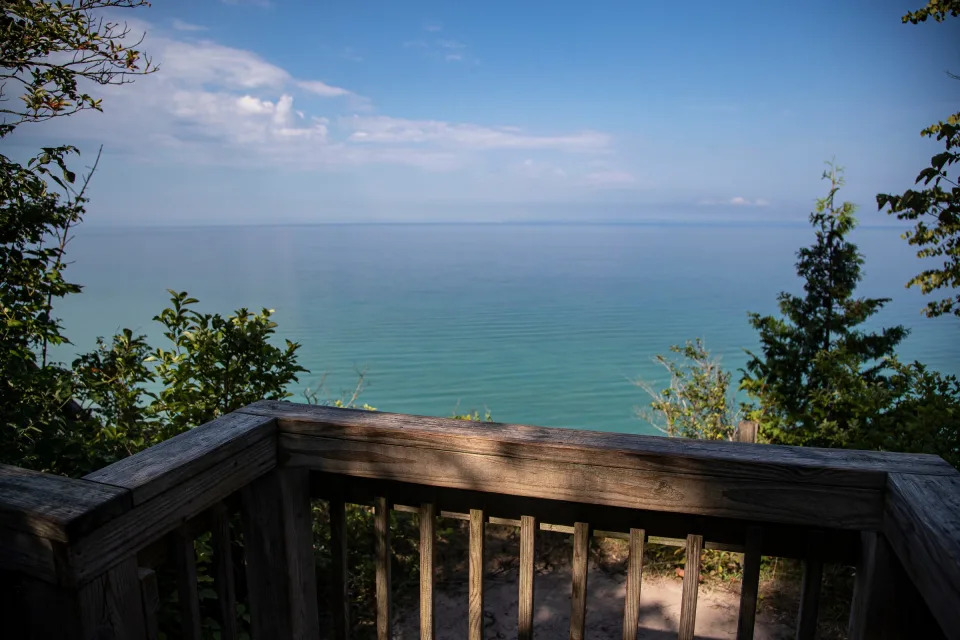
University of Michigan forestry ecologist Peter Reich this month published the findings of a five-year study exposing seedling trees of the boreal and mixed hardwoods forest in northeastern Minnesota to increased temperatures and decreased summer rainfall — mimicking the projected warming and conditions under two different scenarios, one where considerable effort is made to reduce greenhouse gas emissions driving climate change; another with more business-as-usual emissions. They found even the more modest emissions scenarios had a devastating effect on the young trees.
“The prognosis for the forest is not great,” said Reich, director of the University of Michigan’s Institute for Global Change Biology.
“It may be we are at a tipping point beyond which these northern species just can’t hack it. Nature is really resilient, but we are pushing it really far, maybe up to its boundaries.”
More:Climate change is already hurting Michigan’s cherry, apple crops — and it could get worse
More:Great Lakes heat waves are already causing chaos for fish — with worst to come
‘A uniquely long-term experiment’
Reich has been experimenting in the boreal forest in northeastern Minnesota for 14 years, trying to better understand how oncoming climate change is going to influence the forest in the transition zone where colder and more temperate tree species converge.
“We see that many of these spruce and fir forests are doing poorly,” he said. “But temperature is changing, precipitation is changing, fire regimes are changing. There are more insects, we’ve changed management, there is rising CO2, there is changing ozone pollution — it’s hard to know which one of those is driving the change when you just observe forests.”
So Reich and his research team set out to control particular variables. They installed heat lamps and underground warming cables in outdoor plots, exposing nine species of seedlings to increased temperatures over the ambient weather: boreal species, including white spruce, balsam fir, jack pine and paper birch; and more temperate species, including white pine, red oak, burr oak, sugar maple and red maple.
Two levels of potential 21st-century climate warming were used: roughly 1.6 degrees Celsius (about 2.9 degrees Fahrenheit) and roughly 3.1 C (about 5.6 F) above ambient temperatures.
“Unfortunately, you’re going to get to either one (of those temperature increases) in any scenario that’s realistic,” Reich said.
“You can think of it as what we are going to get to in 40 or 50 years if we slow down climate change, versus if we don’t.”
On some seedling plots, the researchers also captured some of the summer rains, preventing the water from reaching the young trees’ roots, to simulate drier conditions that could be coming with later-century warming. Control plots were also planted, allowing seedlings of the same tree species to experience natural conditions.
The findings surprised Reich and his team. Even the more modest levels of warming had a big impact.
“Even the spruce and fir, which are the most boreal of the species, we thought they would do a little bit more poorly with 1.5 degrees Celsius warming — maybe 5% or 10% slower growth and 5% or 10% more mortality,” he said. “But fir in particular had 30% to 40% poorer growth and survival. Quite a dramatic change with what’s not really a very big temperature change.”
While more southerly tree species might one day expand their ranges northward to exploit where boreal species are failing, that’s not likely to be an orderly transition.
“What’s going to fill the gap are shrubs — either native shrubs or invasive shrubs, the buckthorns and honeysuckles of the world, expanding north,” Reich said.
“You might end up with a forest zone that for the next 50, 100, 150 years is kind of trashy — is neither economically nor ecologically what we want.
“You’re not going to get any two-by-fours out of buckthorn.”
The ‘climate change help desk’ for foresters
The U.S. Forest Service has been thinking about climate change’s impacts on the woods longer than most. It founded the Northern Institute of Applied Climate Science in 2009, a collaborative effort among the service, universities, conservation organizations, the forest industry and landowners to develop adaptation strategies for the changing landscape.
“NIACS is like the climate change help desk, or a climate change phone-a-friend service, for land managers of all kinds, all across the Midwest and Northeast,” said Stephen Handler, a climate change specialist for NIACS based at the Forest Service’s Northern Research Station in Houghton.
“When we started at NIACS with this interest of educating people about climate change impacts and thinking about how to adapt, we were in front of a lot of critical audiences. And now, more often, it’s more like folks are drawing us in. Saying ‘We are ready to talk about this. We recognize things are shifting and we need to be agile and keep up with the change.’ “
The group provides the best, most recent available science to whoever asks: the timber industry, state natural resources agencies, parks managers, private landowners. It includes regional evaluations of which tree species are expected to adapt poorly to climate change, which are expected to do better and perhaps expand their ranges, and those in the middle. Through checklists, interested parties can conduct their own vulnerability assessments.
“They are making the choices for themselves, which we think is the appropriate way to go,” he said. “Because every land manager is going to have a different appetite for risk and a different set of values.”
Family and small private landowners account for about 54% of forest land ownership in Michigan. How climate change’s impacts on the woods are responded to is largely in the hands of individuals, families, companies and communities.
“You’re going to have a pretty diverse set of choices being made across the landscape − preservation in some areas, encouraging change in other areas, a lot of places in the middle,” Handler said. “That could be a strength.”
Is assisted migration part of the answer?
A great debate among those who care about the climate-changed forest is how much attention and effort should be spent on trying to maintain what exists in an area now and how much should be devoted to preparation for what may better fit future conditions.
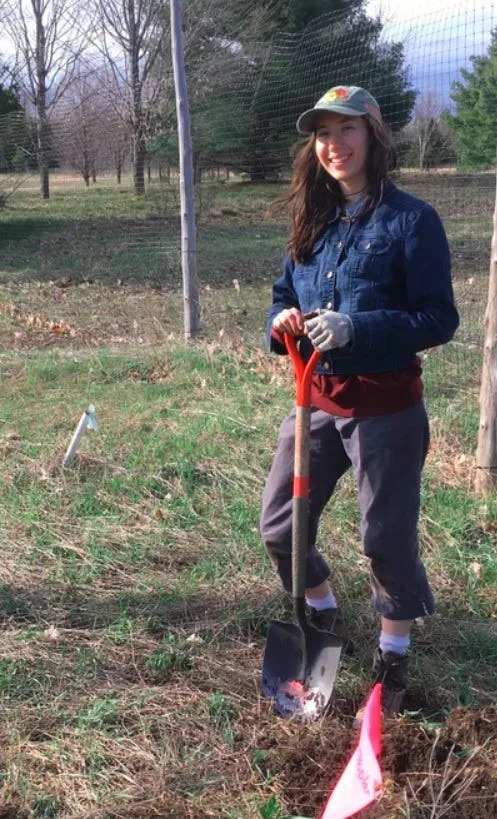
Madeline Baroli has her boots on the ground and her hands dirty, conducting a big experiment across northwest Lower Michigan to help clarify the answer. Baroli, a NIACS climate adaptation specialist, also founded the Assisted Tree Range Expansion Project, a community science experiment that started in 2020 from her postgraduate work with the Leelanau, Grand Traverse and Benzie county conservation districts.
“Really, it’s all about supporting the resilience of our forests by planting and monitoring certain select tree species that are projected to have future suitable habitat in this region,” she said.
The nuances can get controversial. In some parts of the country, transplants introducing new tree types generated backlash. Others are experimenting with the concept of assisted population migration — taking existing tree species in northern Michigan, such as white pine, but introducing the genetics of trees of that species grown in, say, Ohio or Kentucky, trees more adapted to a warmer climate.
Baroli’s focus, instead, is on what scientists call assisted range expansion, taking trees already in Michigan but whose range stops only partway up the Lower Peninsula, and planting them farther north.
“So we’re really just expanding that bubble, that range a little farther, to match what the projections from the U.S. Forest Service Climate Change Tree Atlas have modeled,” she said.
More:$10.3 billion investment to upgrade Midwest, Michigan power grid for renewable energy
The six trees selected for the initial plantings were selected using those models and through conversations with local professional foresters and other natural resources professionals, she said. The first trees chosen for the project were shagbark hickory, tulip trees, sassafras, black tupelo, hackberry and swamp white oak.
Baroli noted that the trees already have some presence Up North, and would potentially be more established there were it not for the fragmentation of their range by highways and agriculture in the southern and mid-Lower Peninsula.
“That’s where I feel we really sort of owe it to the forest to lend a helping hand − because we’ve also altered the landscape in such a way that it limits natural range expansion,” she said.
The first plantings were in the spring of 2020 − just as COVID-19 began to disrupt life.
“We were doing our tree sale, selling the seedlings and trying to get the word out there,” she said. “Luckily, everybody was migrating online, and looking for socially distant things to do. So we really had a pretty successful first two seasons.”
Over 2020 and 2021, more than 2,000 trees were planted by individuals, community groups and families. Baroli did not yet have figures for plantings from this spring.
People are asked to report over time how the trees’ growth progresses.
“What I hope, what’s really important, is just keeping forests as forests,” Baroli said. “At the end of the day, we aren’t really in control of exactly what a forest is going to look like or be − we can’t be. The idea is to reduce that fragmentation … ensure the forests themselves have a chance to adapt, on their own with our help.”
Deer, disease amplifying tree threats
Visitors to the Leelanau Conservancy’s Palmer Woods, a natural area of more than 1,000 acres, have seen something different in recent years: Young trees with protective tubes around their trunks and a large, 35-acre portion of the preserve surrounded by a large wire fence.
It’s all efforts to curb what’s one of the biggest killers of young trees in the region: deer munching on them.
“A lot of the seedlings don’t really have the chance to get to the adult stage,” said Becky Hill, director of natural areas and preserves for the conservancy. “In some of the forests where we have heavy (deer) browsing, you see a lot of adult trees and a lot of seedlings, but not a lot of in-between trees.”

It’s a problem expected to worsen as the region further warms. Milder winters will allow more deer to survive, breed and then feed on the young trees.
“Foresters have a really keen eye on how that next generation of trees is coming in,” Baroli said. “Young trees are more sensitive to things than older trees. First off, the deer love them; they are great deer food. And we have a huge deer population.
“If they are eating those young trees, those young trees aren’t growing up into a future forest. And then if you just have older trees dying off, it’s a problem.”
Beech trees might be nearly doomed
Another pest devastating trees in the region is beech bark disease. A tiny insect called a scale wounds the tree by piercing its bark with sharp mouth parts and sucking out sap. A type of fungus can then enter and infect the tree, weakening it over years until mature trees, almost hollowed out, snap dead.
Milder winters predicted in future warming scenarios will allow more of the insects to survive and infect trees.
“It’s pretty much devasted the population of beech; we are expecting 99% (beech tree) die-off,” Baroli said.
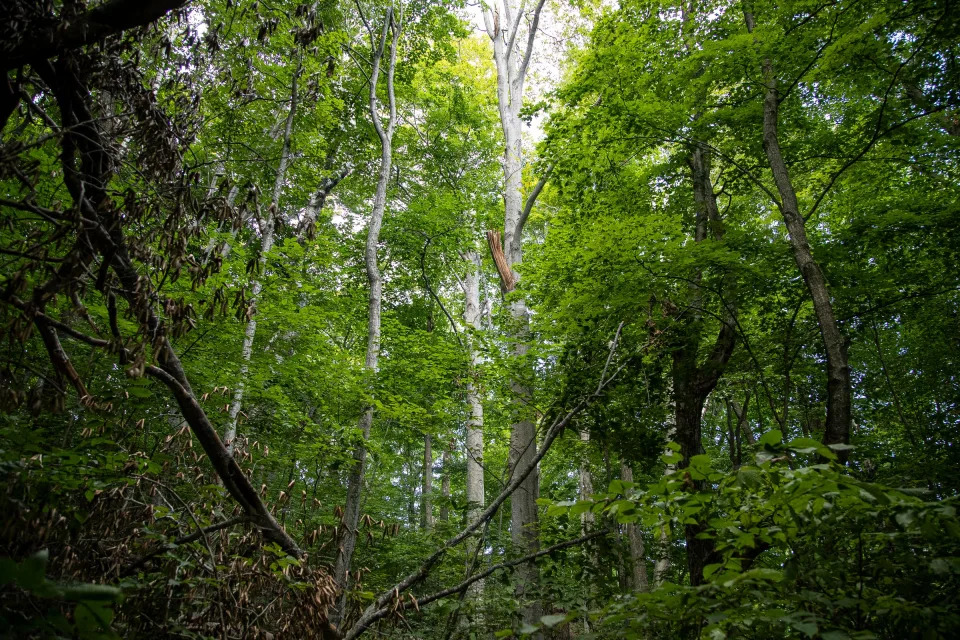
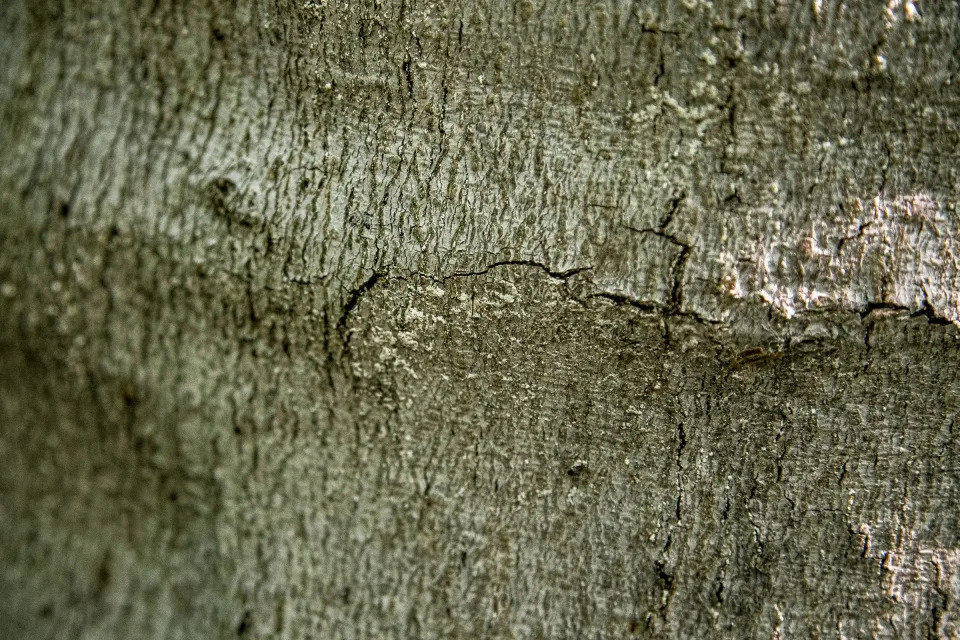
Emerald ash borer is similarly killing millions of ash trees across Michigan.
The Leelanau Conservancy is using the unfortunate circumstance to adopt some of the NIACS’s recommended population migration trees prepared for a warmer climate.
“When we have a die-off where a lot of beech and ash have died, suddenly in our forest we might have a sunny opening,” Hill said. “There are certain species that really need more sunshine to get established − cherries, oaks, other types of species that thrive in those conditions. If we can help get them established, that succession of growth will happen over time.”
The conservancy also hopes to use new tree planting to combat the invasive autumn olive, a shrub “that just takes over fields to the point where you see these autumn olive forests,” she said.
“We’re hoping to get some species growing in there, to get established and maybe help shade out some of the invasive shrubs while creating good wildlife habitat.”
The changing climate is bringing ecological changes “so rapidly,” Hill said.
“It just feels like it’s harder,” she said. “You see the decline of bird species, insects, they are having a hard time keeping up with all of these drastic changes.”
The Michigan forest of 2100 − what will it look like?
Reich envisions a significantly transformed northern Michigan woods by century’s end.
“My hunch is by 2100, we’ll lose most of the spruce and fir,” he said. “We might lose some of the white cedar. The forests will be scrubbier and more open. They may still have a mix of species but will be less diverse … a few areas that are sandier and drier may even convert to grasslands.”
Those changes will have unpredictable impacts on animal habitat, the state’s timber industry and how people can use the forests for recreation.
And it may become a negative feedback loop, accelerating and worsening climate change. Forests take carbon out of the atmosphere and store it in soils and roots and their wood.
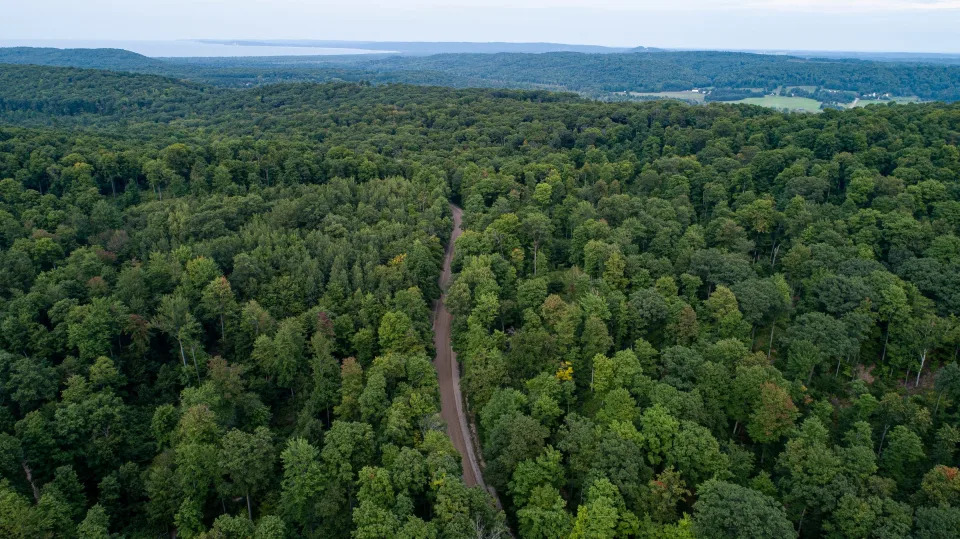
Peat forests, the wet fens prevalent in the Upper Peninsula, make up only 3% of the globe’s forest land but store 30% of soil carbon. A square meter of U.P. or Canadian peatland holds five times the carbon as a square meter of Amazon rainforest.
In a 2020 U.S. Forest Service study similar to Reich’s, peatlands were exposed to controlled, increased temperatures. The results showed the warming causes peatlands to release carbon faster than anticipated, converting them from carbon-storers to carbon-emitters.
“It could be a double-whammy; instead of helping slow climate change, they would be accelerating it,” Reich said.
Tree planting and assisted migration approaches can have some local benefits. But those are ultimately just Band-Aids, he said.
“In order to maintain the economic value of our forests, we do need to manage them to try to make them as resilient as possible in the face of these changes,” he said. “But there are real limits to how much we can do. There are vast forests out there — we don’t have the personnel or the money to try to thin all of the forests and replant them.
“We really need to work at the root cause of this problem, which is climate change.”
